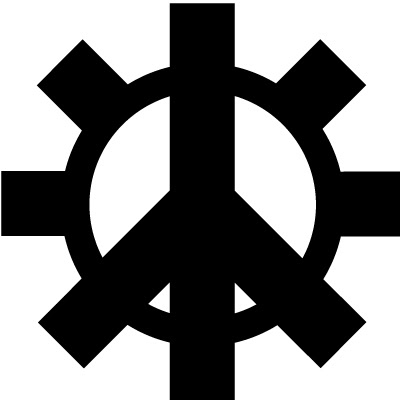Richard A Anders
age ~67
from Campbellsport, WI
- Also known as:
-
- Dick A Anders
- Rick A Anders
- Phone and address:
-
2661 N County Road V, Campbellsport, WI 53010
9205338994
Richard Anders Phones & Addresses
- 2661 N County Road V, Campbellsport, WI 53010 • 9205338994
- 61 County Road V, Campbellsport, WI 53010 • 9205338994
- Malone, WI
- N2661 County Road V, Campbellsport, WI 53010 • 9202540699
Work
-
Position:Farmer
Education
-
Degree:High school graduate or higher
Isbn (Books And Publications)



Begegnung Mit Hans Henny Jahnn: Aufzeichnungen, 1951-1955
view sourceAuthor
Richard Anders
ISBN #
3890869033





Us Patents
-
Pipe And Tube Rehabilitation Liners And Corresponding Resins
view source -
US Patent:7891381, Feb 22, 2011
-
Filed:Feb 7, 2008
-
Appl. No.:12/027504
-
Inventors:Richard M. Anders - Port Washington WI, US
-
Assignee:NOVOC Performance Resins - Sheboygan WI
-
International Classification:F16L 55/16
-
US Classification:138 98, 138 97, 4051501, 4051842
-
Abstract:A material composition and method for making flexible inversion liners having glass fibers added for strength is disclosed. The liner combines a first layer of polyester felt, an open-faced knit of fabric from ECR glass and PET strands, glass fibers, and a second layer of polyester felt. These components are needle-punched together into essentially a single composite mat, or substrate, using standard needle-punching machinery. The liner is then formed into a tube preferably through a butt joint and prayer stitch covered with a urethane tape. A coating or foil is placed on the outside (prior to inversion) of the liner that is then impregnated with a resin. The resin can have low levels of volatile organic compounds, and can be thermosetting or UV-curable. The liner is then installed in a pipe through an inversion technique using, e. g. , either air or water, and cured with UV radiation, steam, or hot water.
-
Reinforcing Liner
view source -
US Patent:20080277012, Nov 13, 2008
-
Filed:May 10, 2007
-
Appl. No.:11/747031
-
Inventors:Richard M. Anders - Port Washington WI, US
James A. Wainright - Ochlocknee GA, US -
International Classification:F16L 55/16
-
US Classification:138 98, 138125, 138146
-
Abstract:A material composition and method for making flexible inversion liners having glass fibers added for strength is disclosed. The liner combines a first layer of polyester felt, an open-faced knit of fabric from ECR glass and PET strands, glass fibers, and a second layer of polyester felt. These components are needle-punched together into essentially a single composite mat, or substrate, using standard needle-punching machinery. The liner is then formed into a tube preferably through a butt joint and prayer stitch covered with a urethane tape. A coating or foil is placed on the outside (prior to inversion) of the liner that is then impregnated with resin. For heat curing, the liner is impregnated with a thermosetting or UV-cured resin. The liner is then installed in a pipe through inversion, using either air or water and cured with UV, steam, or hot water.
-
Connector For Interconnecting A Lateral Pipe To A Main Pipe
view source -
US Patent:20100187813, Jul 29, 2010
-
Filed:Jan 23, 2009
-
Appl. No.:12/358646
-
Inventors:Richard M. Anders - Port Washington WI, US
-
International Classification:F16L 41/02
F16L 55/18 -
US Classification:285204, 285 15
-
Abstract:A one-piece connector has a tubular member and an annular flange, and is usable to connect a lateral pipe to a main pipe. The connector is constructed such that the annular flange is glued to the inner surface of the main pipe and the tubular extends through an opening formed in the main pipe. The connector may be formed of stainless steel or other alloy or of a plastic polymer material. The connector has a tapered end, which is tapered inwardly to facilitate press-fitting a lateral pipe onto the tubular member.
-
Rehabilitation Liner System
view source -
US Patent:20110083766, Apr 14, 2011
-
Filed:Oct 7, 2010
-
Appl. No.:12/900025
-
Inventors:Richard M. Anders - Port Washington WI, US
-
International Classification:F16L 55/16
-
US Classification:138 98
-
Abstract:A cured-in-place liner system for pipe rehabilitation includes an end sealing assembly coupled to an end of a pipe and the cured-in-place liner to prevent water from penetrating the area between the cured-in-place liner and the pipe. A sealing member is provided for sealing off a tap of a lateral pipe from the main pipe to prevent the penetration of resin and other materials into the lateral pipes during the curing process. The sealing member includes a central portion that is placed over an end of the tap and removable after completion of the curing process so that fluids may freely flow between the main pipe and the lateral pipe. A tool assembly for coupling the sealing member and/or a connector between to a lateral pipe is also provided. The tool includes a coupling member attachable to a robotic device and a fixture tool having means for coupling to the sealing member and/or connector.
Resumes

Richard Anders
view source
Richard Anders
view sourceLocation:
United States
Youtube
Googleplus

Richard Anders

Richard Anders

Richard Anders
Flickr

Richard Anders
view source
Richard Anders
view source
Richard Anders
view source
Domenic Richard Anders
view source
Richard Anders
view source
Anders Richard
view source
Richard Anders
view source
Richard Anders
view sourceMyspace
Classmates

Richard Anders
view sourceSchools:
Valley View High School Valley View TX 1991-1995
Community:
Michael Moore, David Woody, Nelda Speed, Will Pace

Richard Anders
view sourceSchools:
University Military School Mobile AL 1953-1957
Community:
Allen Hargrove, James Pate

Richard Anders | El Dorad...
view source
Richard Anders, Enka High...
view source
Richard Anders | Chenango...
view source
Valley View High School, ...
view sourceGraduates:
Summer Swanson (1995-1999),
Richard Anders (1991-1995),
Natashas Borden (2002-2006),
Martha Alexander (1962-1966)
Richard Anders (1991-1995),
Natashas Borden (2002-2006),
Martha Alexander (1962-1966)
Get Report for Richard A Anders from Campbellsport, WI, age ~67



















